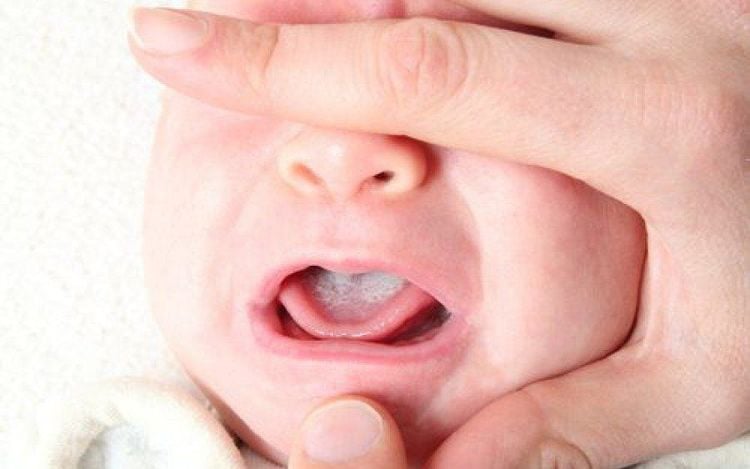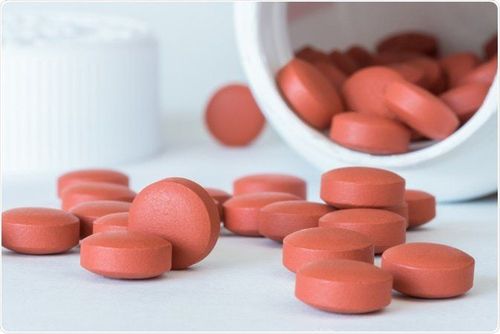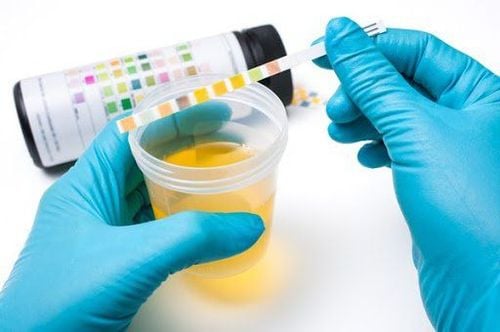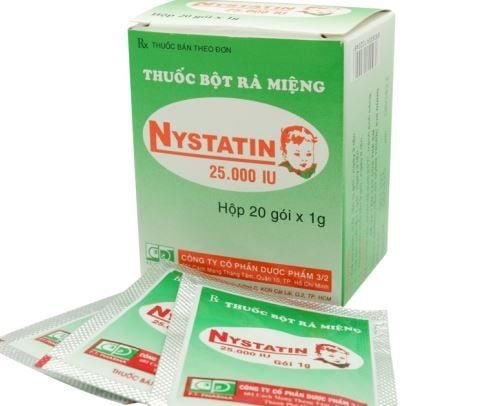This is an automatically translated article.
This article was professionally consulted by Dr. Nguyen Nhu Thu Truc - Obstetrician and Gynecologist - Department of Obstetrics and Gynecology - Vinmec Nha Trang International General Hospital.Thrush or thrush is a common disease in infants and young children. Although the disease is not life-threatening, it can cause babies to cry, even stop breastfeeding. So what is a fungal infection of the tongue? What are the signs of thrush in babies? How to prevent disease?
1. What is thrush in babies?
Oral thrush, or thrush, are white pseudomembranous membranes that appear on the lining of the mouth, especially the upper surface of the tongue, caused by the fungus candida albicans. Thrush is initially white dots, then grows quickly and penetrates deeply into the lining of the tongue and nasopharynx, forming large pseudomembranous plaques that cause pain and discomfort, difficult to peel, easy to bleed.Tongue fungus usually occurs in the period from birth to 9-10 years old, can also be in children 15 years old.
In addition to the above oral lesions, infants may have difficulty feeding, agitation, and irritability. The baby can pass it on to the mother during breastfeeding, then the fungal infection can pass between the mother's breast and the baby's mouth.
Trắc nghiệm: các chỉ số cần chú ý về sự phát triển thể chất của trẻ
Chiều cao, cân nặng của bé ở từng giai đoạn nên là bao nhiêu là bình thường, bao nhiêu là bất thường? Cùng ThS.BS Ma Văn Thấm điểm lại xem bạn đã nắm được các chỉ số phát triển thể chất của bé chưa nhé!The following content is prepared under supervision of Thạc sĩ, Bác sĩ y khoa, Ma Văn Thấm , Nhi , Phòng khám Đa khoa Quốc tế Vinmec Dương Đông(Phú Quốc)
2. Why do babies get thrush?
In young children and infants prone to thrush due to less salivation, the oral mucosa in an acidic environment has a low pH value. The disease often appears when the baby's oral hygiene is not guaranteed, creating conditions for fungi to grow and form thrush.

Improper oral hygiene or not cleaning regularly, especially after feeding or after eating powder, for too long; Can be transmitted through the mother's genital tract during normal delivery or by white spots on the mother's breasts and nipples; Raynaud's syndrome or eczema can also be a risk factor for thrush. Children with cancer, HIV or other immune diseases that reduce their resistance, often have very severe tongue fungus; The cases of giving children a lot of inhaled corticosteroids to support asthma, cytotoxic drugs in cancer treatment, use of broad-spectrum antibiotics... change the imbalance of the microflora of children, creating favorable conditions. beneficial for fungal growth.
3. Signs of tongue fungus in babies
The first appearance is small white dots on the top of the tongue in a circular arrangement to form a string on the child's tongue. These white dots can spread into plaques on the surface of the tongue and if left for a long time, it will spread to the entire tongue, causing loss of taste, refusal to suckle, anorexia, pain, fussiness, irritability when suckling; Thrush, if left untreated, thickens and can spread into the airways, causing cough, pneumonia, bronchitis, and lung fungus. If it spreads to the stomach, it can cause diarrhea, which is very dangerous for the health of the child. Thrush clings to the surface of the tongue, difficult to peel, when rubbing or trying to pull it off, it will cause pain, bleeding, severe infection, very dangerous to the health of children. Note to distinguish between thrush in babies and milk residue:Unlike thrush, milk residue often appears after every time a baby suckles or drinks milk. Milk residue appears as small white dots that easily flake and float when swallowing saliva or drinking water; Milk residue does not cause pain, does not bleed, does not upset the baby; Milk residue, if left in a thick layer, will affect the taste but not much. This phenomenon ends when all the milk residue is removed.

4. How to prevent tongue fungus in babies?
To prevent tongue fungus for children, it is best to prevent from both mother and baby.For children:
Regularly clean the child's oral cavity, especially after feeding; Use separate towels for each family member, pay more attention to the baby's items and toys, which must be cleaned with hot water to kill fungal spores; Regularly clean the child's mouth every day with 0.9% physiological saline or warm clean water; Special attention should be paid to children with diseases related to the immune system such as HIV, diabetes.... must combine treatment with improving children's resistance; For mothers:
Clean the nipples before and after each feeding; Keeping the house clean; During pregnancy, if the mother finds out that she has a vaginal yeast infection, she should see a doctor for timely examination and treatment to avoid infecting the baby during normal delivery; In the process of breastfeeding, breastfeeding, if the mother detects that the nipple fungus is present, she should also be examined and treated immediately to avoid spreading the infection to the baby during feedings; Avoid kissing, don't let strangers kiss your baby's lips or cheeks because it's easy to infect the baby with fungal infections. Tongue fungus is a common disease commonly seen in young children. Although it does not pose a danger to children, if it lasts for a long time, it can affect the eating process and the longer it lasts, it can affect the child's nutrition and development. Mothers must always monitor and observe to detect diseases in time and adhere to advice on care and counseling to minimize the possibility of tongue fungus in babies.
In the infancy stage, the baby may not only be susceptible to tongue fungus but also many other diseases because of the immature immune system. This is also the golden period to carry out tests and screenings to detect dangerous diseases. To protect the baby's health, right after birth, parents need to:
Echocardiography after birth early, detect congenital heart even if there are no heart abnormalities during pregnancy. Performing postpartum screening helps to detect dangerous diseases such as congenital hypothyroidism, G6PD enzyme deficiency, congenital adrenal hyperplasia, congenital hearing loss. Vinmec is currently one of the few hospitals that perform echocardiography for newborn babies, has a team of doctors specializing in echocardiography and treating cardiovascular diseases in children, helping to detect congenital heart diseases accurately. , timely intervention treatment. In addition, Vinmec provides a full range of postpartum screening services such as: Heel blood collection, Venous blood test to detect early, accurately 3 dangerous diseases in newborns only when the baby is 3-7 years old. day old. When detecting any health problems of the baby, the team of doctors at Vinmec will advise on the treatment direction with a full range of specialized specialties, helping the baby get the best treatment.
If you have a need for medical examination at Vimec Health System nationwide, please make an appointment on the website to be served.
Please dial HOTLINE for more information or register for an appointment HERE. Download MyVinmec app to make appointments faster and to manage your bookings easily.















